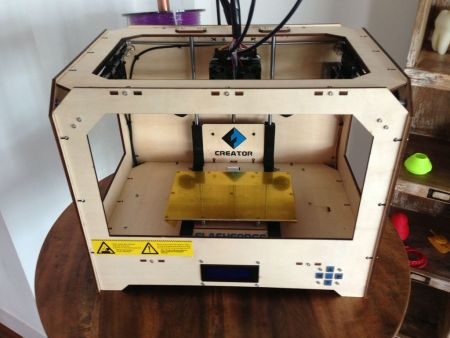
Shopping for a 3D printer? What should you look for? Everyone knows how to shop for common items, such as cars or computers (well, perhaps excepting your grandparents), but what do you look for in a 3D printer? What are the key characteristics that define the device?
- Process: How does the printer work? Is it a plastic extrusion device, a powder-based unit or a resin machine? Each process has different advantage and challenges.
- Materials: What material types is the machine capable of printing? Plastic extrusion machines could use ABS, maybe PLA, perhaps even NYLON or HIPS.
- Resolution: How smooth is the output? Often specified as “layer size”, this factor determines the smoothness of your print. The smaller the better, although more layers means more time required to print.
- Speed: How fast does the machine print objects? For extrusion devices, it’s often specified in mm/s because the extruder must traverse every single voxel of the object, but for other processes it might be cm/hr as whole layers are printed at once, regardless of the amount of material on a layer.
- Brand: This shouldn’t matter, but it does for some people. Unfortunately, there are a vast number of brands available today and we don’t know which are the best because it’s always changing.
- Support: How will you get help when something goes wrong? Is there telephone support? An online 24/7 forum? How large is the community behind the device? It won’t matter at all until something breaks, at which time it becomes a critical factor.
- Software: What software comes with your 3D printer? Some manufacturers include sophisticated 3D modeling software in addition to software to control the printer. Were sample print files provided?
Wait, we didn’t mention build volume. That’s because we believe it really doesn’t matter. Virtually all personal 3D printers have build volumes sufficient to print common-sized objects of around 10cm on a side. Larger items are problematic to print for several reasons: print time becomes ridiculous; likelihood of print failure increases; filament capacity is exceeded. Don’t print large things!
May the shopping begin.

